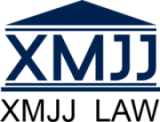You may have many questions about what to expect if you’re preparing for a trial. The tax court trial clerk will announce your calendar call on the first day. This announces each case that is not yet settled. The IRS attorney will usually announce his or her case to the tax court judge. The tax court judge will then schedule specific cases for trial at specific times during the trial session.
What Happens at the Trial?
The clerk of the court will call your case at the beginning of the trial. Your attorney and the IRS attorney will then state their names. The judge will then handle the preliminary matters such as the filing of the stipulation or pretrial memorandum. An opening statement is a statement by the parties that explains what they believe the facts and laws are. The judge will then decide on the matter.
The taxpayer usually makes the first statement in opening statements. Statements are not usually made under oath. This means that the judge cannot consider any facts in the opening statements unless they have been independently proven by sworn testimony. Sometimes, opening statements should be given under oath to avoid repeating and establishing facts during the trial.
Each party will present its witnesses after the opening statements have been completed. Presenting witnesses serves two purposes: to give relevant information to the tax court judge, and to allow the judge to determine facts from the evidence. The taxpayer is often the only witness at a tax court trial. Any taxpayer who is also a witness in a tax court trial will have to swear to the truth before giving any testimony. Your counsel will question you directly if you are being represented.
The IRS attorney will cross-examine the taxpayer after a direct examination. If necessary, additional testimony may be provided to clarify any questions raised by cross-examination. The same process will be used for any additional witnesses after the taxpayer has given their testimony. The IRS will then present any witnesses it has, and they will be subject to cross-examination. The judge can ask for clarifications or additional evidence during the trial. After all witnesses and evidence have been presented, the trial is over. The parties will then wait for a decision.
This article was written by Alla Tenina. Alla is a top trust attorney in Orange County California, and the founder of Tenina law. She has experience in bankruptcies, real estate planning, and complex tax matters. The information provided on this website does not, and is not intended to, constitute legal advice; instead, all information, content, and materials available on this site are for general informational purposes only. Information on this website may not constitute the most up-to-date legal or other information. This website contains links to other third-party websites. Such links are only for the convenience of the reader, user or browser; the ABA and its members do not recommend or endorse the contents of the third-party sites.


